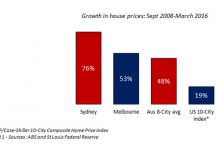With certain areas not able to cope due to typhoon damage or hurricanes literally tearing everything up all over the place it would be wise to look for relatively safe places to plant your agricultural investment. For rice, Thailand is still a world leader despite recent flooding. For other foodstuffs, it is hard to look further than Brazil. The Financial Times (FT) had a headline earlier in 2010 which said, “Superpower Is Ready to Feed the World.” For those surprised by this comment, it should be remembered that Brazil is the top exporter of beef and chicken as well as green coffee, soya, orange juice, ethanol and sugar.
It is also number four in pork and maize. However, there are problems. As the FT report goes on to say, “In Brazil, analysts say output is reaching its limit and the investment needed for growth, especially in transport infrastructure is falling short.” Transport not only includes roads but rail and waterways. It is interesting that Roberto Rodrigues, the former Brazilian Minister of Agriculture says, “If I was an investor, I would put my money in logistics and fertilizer. The opportunities are fantastic.” Remember how beneficial fertilizer would be to the Indian farmer as well – also see below.
We touched earlier on the world’s population and how it is the cause of many of its problems. We will discuss the elderly later but we also need to look at the young. In many countries, a large percentage of the population are teenagers. We need to, and please forgive the pun, harvest their potential and take advantage of their vitality. How? I do not know but there is always something round the corner. For example, there were massive food shortages after the Second World War but these were soon covered (some might say masked) by the Green Revolution. This was a brilliant piece of breeding work by researchers in Mexico and the Philippines who bred stiff-strawed varieties of wheat and rice that could stand up to high nitrogen fertilizer applications and which had high yield potentials. The results were almost unbelievable increases in grain production.
Whilst oil prices were low the package of inputs required by the high yielding varieties were affordable by all, even by countries which had only negligible amounts of foreign exchange. Though countries were not always consistent in their priorities, it is true to say that the use of fertilizers and farm machinery increased quite markedly in the developing countries during the 1960s and 1970s. In Bangladesh, for example, the use of commercial fertilizers rose from 275,000 tons in 1969 to 830,000 in 1981. A significant increase, though small compared to the 48 million tons used by America in 1982.
With application and invention it is plain to see that agriculture and farming is in a position to provide many investment opportunities which will benefit not only the investor but the world generally.
In the last decade alone, the rapid expansion of the emerging market economies and the creation of a middle class for the first time in these countries has made it patently clear that food, land, water and energy are becoming ever more important. It is only a couple of years ago that oil prices reached an all time high and so put up the price of almost everything. This is one of the reasons that China has been combing the globe buying up physical assets wherever it can. It is protecting its future supply of resources and is one of the reasons why it owns so much of Africa.
Thus is can be seen that the growth in population and the increase in wealth of people all over the world is one of the main reasons for the upsurge in demand for all natural resources – including rare earths (see previous article).
Another ‘benefit’, from an investment point of view, of an expanding population is the fact that people will get older. In a recent article in the UK Telegraph, it was reported that the Department of Work and Pensions expect that nearly a fifth of the people alive now in the UK will survive until they are at least 100 years of age. These factors will put strain on the healthcare sector and not just the pharmaceutical industries. There will be a growing need for sustainable healthcare facilities, retirement villages, hospitals and medical centres. All of these will require investment.
Not only this, but the basic fact is that infrastructure development has fallen behind the rate of urbanization in the developing nations. This has led to a poor quality in living conditions, overcrowding and poor sanitation. All of this has increased the levels of fatality and sick leave.
The improvement in living conditions also requires the provision of healthcare in many different forms. One of the more pertinent facts is that a two tier system is being formed whereby the basics are covered by the government and the private sector will take care of those who can afford it. This also allows the opportunity for investment at both the corporate and individual levels.
The basics are that even though population growth is a major cause of the world’s problems at the moment, it is also providing many investment opportunities. The more people there are then the more food, water, energy, land, infrastructure, healthcare and education they are going to need. All of these require funding and so provide opportunities for the investor.
The above data and research was compiled from sources believed to be reliable. However, neither MBMG International Ltd nor its officers can accept any liability for any errors or omissions in the above article nor bear any responsibility for any losses achieved as a result of any actions taken or not taken as a consequence of reading the above article. For more information please contact Graham Macdonald on [email protected]




